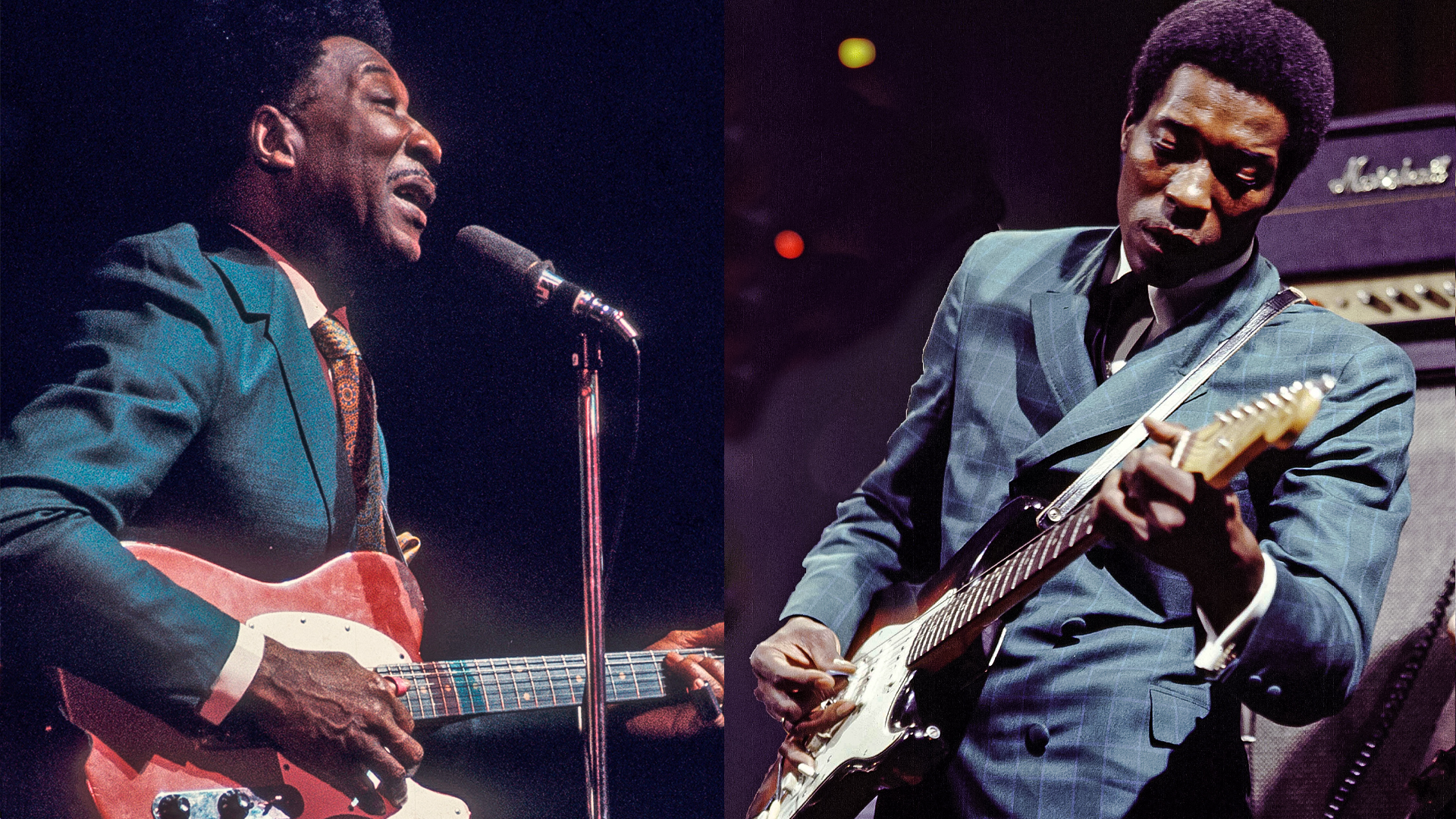”What I’m playing is like a string quartet, meaning that a mandolin corresponds to a violin”: Dave Grisman on his Acoustic America album and stunning exhibition of 90 iconic folk instruments at Arizona's Musical Instrument Museum
Musicologist and gear collector David Grisman talks through the historic mandolins, guitars and banjos he played on his Acoustic America album, but you can see them for yourself at Arizona’s Musical Instrument Museum
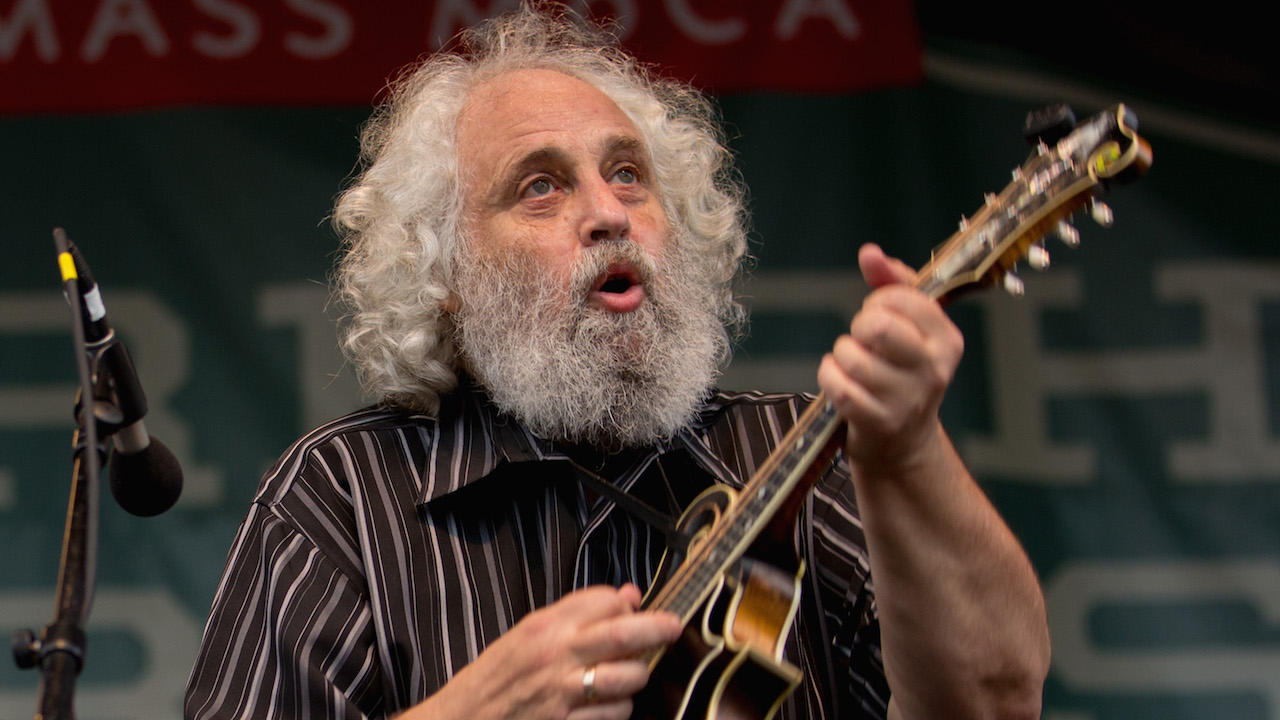
David Grisman embodies the concept encapsulated in Acoustic America, the Musical Instrument Museum’s new exhibition. The iconic mandolinist, gear collector, musicologist and former Frets columnist has lived the life Americana.
Inducted into the International Bluegrass Music Hall of Fame in 2023, Grisman has worked with a litany of legends, including guitarists Jerry Garcia, Tony Rice and Martin Taylor. He founded the Acoustic Disc label in 1990 and has remained dedicated to the preservation and integrity of acoustic music, musicians and instruments.
And now, through a partnership with the Musical Instrument Museum in Phoenix, Arizona, he is presenting the Acoustic America project, an exhibition featuring 90 iconic folk instruments associated with heroes of American music. About a third of the show’s pieces come from Grisman’s personal collection and appear on a new Acoustic Disc compilation of the same name.
Highlights from Grisman’s collection include the 1925 Gibson F-5 “Fern” mandolin he played exactly 50 years ago with the highly influential supergroup Old & In the Way, featuring Garcia on banjo, Vasar Clements on fiddle and Peter Rowan on guitar.
There’s also the 1918 Gibson MB-4 mandolin-banjo Grisman played on “Stealin’,” from the seminal 1996 Garcia/Grisman album, Shady Grove. Rice plays Grisman’s 1930s Le Domino flat-top guitar on “Vintage Gintage Blues,” a track culled from the sessions that produced the first of Grisman and Rice’s three landmark Tone Poems albums that present “The Sounds of the Great Vintage Guitars and Mandolins.”
“It Had to Be You,” from Tone Poems II, features Martin Taylor on Grisman’s Gibson Lloyd Loar L-5 while Grisman conjures a full string section using a trio of Loars — a mandolin, mandola and mandocello — from the roaring ’20s.
The larger exhibition includes a 1935 Martin D-28 owned by Mike Seeger and used by Elizabeth Cotton to record “Freight Train” for her 1958 Folkways album Folksongs and Instrumentals With Guitar. There’s also Mississippi John Hurt’s 1964 Guild F-30 that John Oates used on the first two Hall & Oates records, fabled Gibson designer Lloyd Loar’s personal 1924 F-5 mandolin, Earl Scruggs’ 1928 Gibson RB-Granada banjo and Michael Hedges’ 1913 Knutsen harp guitar.
All the latest guitar news, interviews, lessons, reviews, deals and more, direct to your inbox!
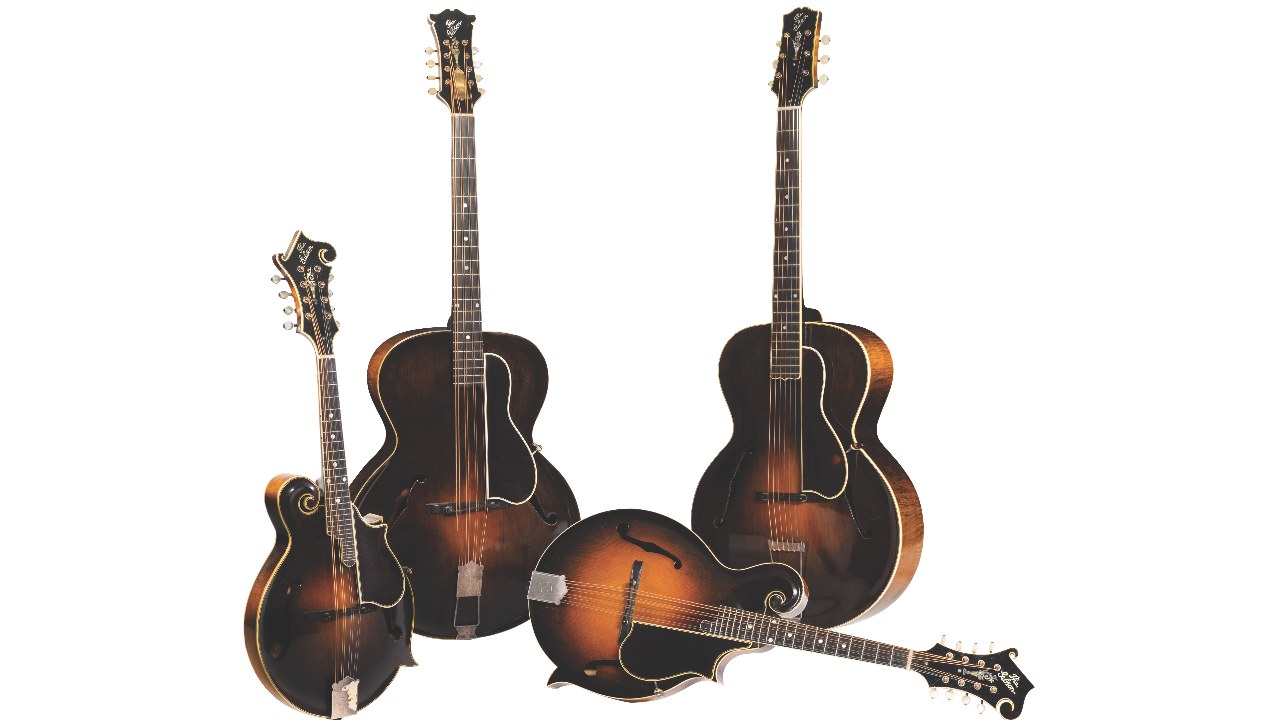
“These are instruments that have changed so many lives of artists and audiences alike,” MIM senior curator Rich Walter explains. “Each one has a unique story and personality, but together they remind us of the shared connections within America’s most influential music.”
Acoustic America: Iconic Guitars, Mandolins, and Banjos runs through September 15, 2024. Dawg (as Garcia dubbed Grisman) was excited to give Guitar Player insights into his historic instruments and the recordings featured on the Acoustic America album.
What is the origin story of Acoustic America?
Acoustic America is the brainchild of Rich Walter. We met about five years ago when I played a gig at the Musical Instrument Museum with my Dawg Trio. He mentioned being a fan of my Tone Poems recordings, and wanting to do an exhibition featuring American-made instruments that were used in creating acoustic American music. I’ve been all about that for a long time and have quite a collection.
I sent him a list and he narrowed it down to 30-plus instruments. He spent a few days visiting at my place, and by then I was aware of the instruments he wanted.
Naturally it inspired the thought to turn this into a recording project. I’d already used a bunch of these instruments on a lot of recordings, but some had never been recorded. I sprang into action and tried to sort it all out in terms of finding material to play on them. In some cases they inspired me to write new music, plus there are a couple of tracks by musicians associated with these instruments.
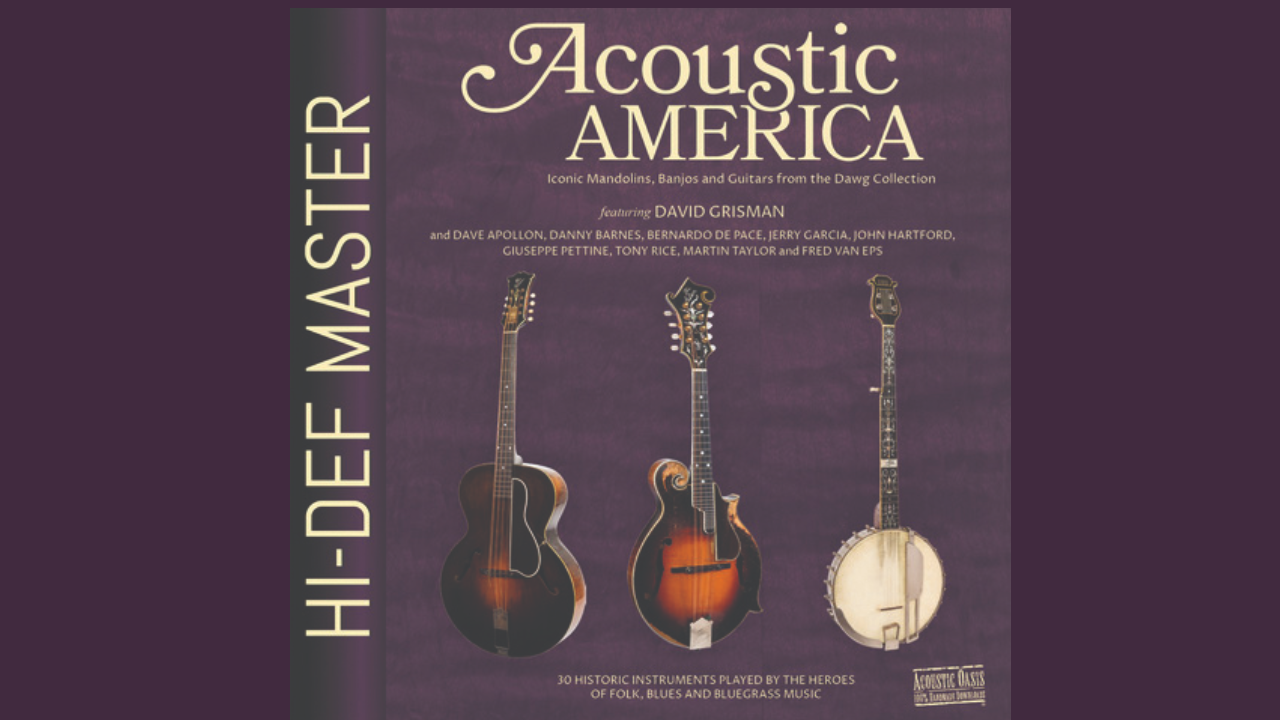
How about a couple of examples?
The first track, “Barcarola,” by Giuseppe Pettine, is a mandolin solo from 1955. His instrument might be the first artist-endorsed mandolin made in America. [Boston-based mandolin company] Vega made the Pettine Special in 1898.
The fourth track, “Lonesome Mama Blues/Bolero” is a solo banjo performance by Fred Van Eps. He was a banjo virtuoso who also designed banjos, and I had one of his instruments in my collection from the ’20s. I tried to put the album together more or less chronologically in terms of the instruments.
Can you address the guitars from your collection?
There are only a few guitars. Tony Rice played my 1930s Le Domino on “Vintage Gintage Blues” from Tone Poems, and there’s an alternate take on Acoustic America. I don’t remember where I got that guitar. It was a Sears and Roebuck type of brand and I think it was made by Regal. There was a whole range of Le Domino instruments with domino appointments, including an archtop guitar with a bigger body and an oval soundhole, called a Big Boy. Those are mostly what you run across.
I don’t know if I’ve ever seen another like mine, but Tony liked it, even though it was a cheap guitar. A lot of collectors are only interested in ultra-fancy and expensive instruments, but a lot of these were inexpensive and yet sound pretty good.
There’s a newly recorded version of “Wabash Cannonball” with Danny Barnes playing an unusual guitar. It’s a 1933 HG-24 [round-shouldered dreadnought], which is cool because it has a round soundhole, four f-holes and an inner chamber. It was intended for Hawaiian playing. Gibson only produced these strange instruments for a few years, until the early ’30s.
“It Had to Be You,” from Tone Poems II, includes a quartet of Lloyd Loar instruments from 1923–’24. Martin Taylor plays my L-5, and I’m on mandolin, mandola and mandocello. What I’m playing is like a string quartet, meaning that a mandolin corresponds to a violin, a mandola corresponds to a viola, and a mandocello is an octave below a mandola, which is the way a cello is tuned.
Martin is also on another track, “Unforgettable,” from Tone Poems II, where he plays the very same D’Angelico guitar that’s in the exhibition, but it’s not from my collection.
The first Super 400 is on there — or at least it’s a very early Gibson Super 400 from 1934, designated as a “Super L-5” on the truss-rod cover. Danny Barnes plays it on the cut of “Big Blue” by the Dawg Trio that I used on the Acoustic America album. The 1925 Gibson F-5 “Fern” mandolin I played on that track was my main axe for many years. I used it for Old & In the Way and on all my original Quintet recordings.
Jerry Garcia plays guitar on a couple of cuts. One features you playing a mando-banjo. Can you share some thoughts?
I don’t have any of Jerry’s guitars, which I’m sure they would’ve wanted. As for the mandolin-banjo, I played that on “Stealin’,” from the Shady Grove album Jerry and I did. Jerry played a guitar made by Dexter Johnson from Carmel Music.
That 1918 Gibson MB-4 was the first mandolin-banjo I ever bought, and I got into collecting them because they were readily available at bargain prices. But I soon discovered after dragging them around to various recording sessions that nobody wanted to hear it. [laughs].
Jerry was the first person to let me use one on a recording, so it ended up on “Stealin’” and I believe one other bonus track on the deluxe download of Shady Grove, which was the only other way this alternate take of “Stealin’” was available as well.
There’s also an entire album of alternate takes from the Jerry Garcia & David Grisman album, and that’s where I got the version of “Arabia” that appears on Acoustic America. I play a 1982 Monteleone Grand Artist mandola, which as I mentioned corresponds to a viola being tuned down a fifth from a mandolin.
That’s a wonderful instrument made by one of the top luthiers in America, John Monteleone, who became more famous for his guitars, but he started out building mostly mandolins and mandolas. I believe that mandola is the second one he made. I had the first one, but I believe I traded it in when he showed me that second one.
What instrument being exhibited, from outside of your own collection, do you find particularly intriguing?
They have a RB-G Granada banjo that allegedly belonged to Earl Scruggs. I assume they did their due diligence. His famous banjo that’s not in this exhibition is a Gibson Mastertone Granada.
Banjo parts often get replaced. The neck on that was replaced many times and many of the parts were not original. I’d never heard of this instrument, but they say he had another Granada that’s not of the same construction.
A banjo nerd would say that Earl’s famous banjo is a one-piece flange flathead from around 1930, and the Granada in this exhibition is a Granada with a two-piece flange archtop, so it’s really a different beast. I’m curious because I’ve never heard of him having another Granada, but I certainly don’t know everything.
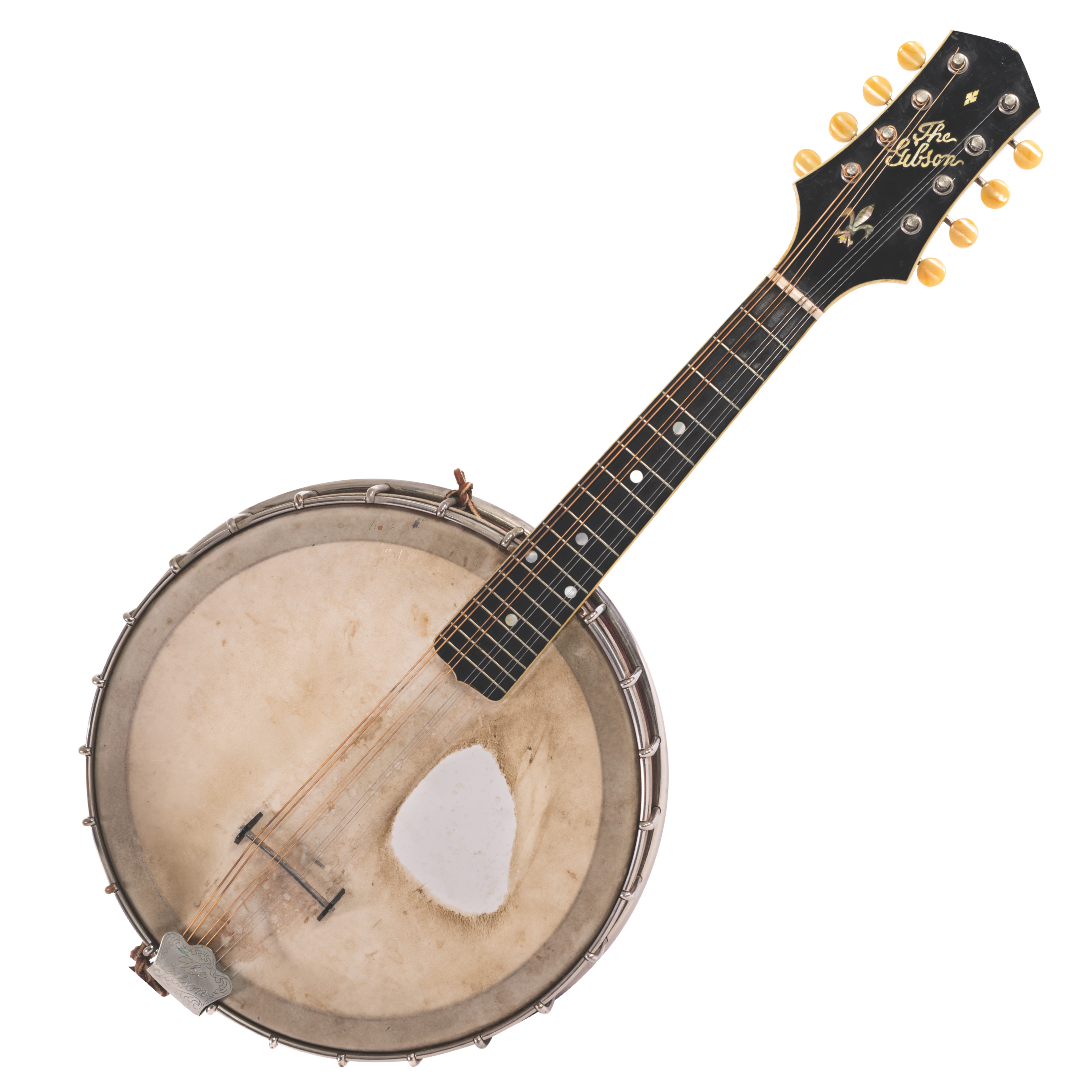
What do you appreciate most about how the MIM is presenting Acoustic America?
It’s great that they are trying to choose instruments associated with musicians and the music they made, because that’s the real point. Like a couple of the mandolins from my collection: I have Jethro Burns’ first Gibson — it’s an A-2 model — and Ralph Rinzler’s first F-5, which I watched him refinish when I was, like, 15 or 16 years old.
I haven’t played instruments outside of my own from the exhibition, and in fact no one can, which is kind of sad because ultimately these things are meant to be played. But it’s good people can look and hear recordings of them. That’s why I’m making this recording, and the Tone Poems recordings, so everyone can hear the instruments in the hands of the associated musicians making music.
It really has to do with the player. Who says that a Selmer guitar is a good sound? Django Reinhardt played it. That’s what makes you like it, not how the guitar sounds. If George Gruhn played it, nobody would’ve ever heard of it. I’m not discounting the instruments, but none of them are going to make anybody else sound like Jerry or Tony or Martin or any great guitarist. That’s all in the hands. But people tend to give credit to the instrument.
Acoustic Disc is issuing a live Old and In the Way release to commemorate the 50th anniversary of those gigs. What are some other recent and upcoming releases?
Guitar players will be interested in a release we put out this year that’s the only concert of Tony and Wyatt Rice playing guitar duets. There were two nights totaling four sets recorded in 1996 that we released as Together!
We just put out a recording by a banjo player and singer named Roscoe Holcomb. In 1968, Eric Clapton said Roscoe Holcomb was his favorite country musician. The record is called Raw Country and it’s the real deal — very emotional music.
We also put out a compilation record called We Love Django! featuring a recording of Oscar Aleman. He was a guitarist from Argentina who moved to Paris in the thirties. He was Josephine Baker’s accompanist and a friend and rival of Django Reinhardt. The famous jazz critic Leonard Feather said that Oscar could outswing Django. Actually, Jerry Garcia turned me onto Oscar Aleman. That’s where he learned “Russian Lullaby.”
How does it feel to be running Acoustic Disc in the digital era?
Acoustic Disc started during the shift away from LPs to CDs, and then we eventually developed Acoustic Oasis as the digital download arm of the label about 20 years ago after I read a book called The Future of Music that predicted the digital ascendancy.
When my wife, Tracy, and I took over operation of the company about two or three years ago, we abandoned making physical product to focus purely on digital. It’s great because I’ve been able to triple my output from four discs per year to one downloadable release per month in three formats: MP3, CD quality, or high definition 24-bit/96K audio files, which sound better than CDs.
They’re all the same price. I’ve having a good time doing one of my favorite things, which is making records. I was born in ’45, which made me 33 in ’78. I realized that on my 33rd birthday. I was meant to be in the record business.
David Grisman's latest album Garcia Grisman is available to buy and stream now
The exhibition Acoustic America, Iconic Guitars, Mandolins and Banjos is now on at the Musical Instrument Museum in Arizona. Book tickets here
Learn more about David Grisman's Acoustic America album and buy a copy here
Jimmy Leslie is the former editor of Gig magazine and has more than 20 years of experience writing stories and coordinating GP Presents events for Guitar Player including the past decade acting as Frets acoustic editor. He’s worked with myriad guitar greats spanning generations and styles including Carlos Santana, Jack White, Samantha Fish, Leo Kottke, Tommy Emmanuel, Kaki King and Julian Lage. Jimmy has a side hustle serving as soundtrack sensei at the cruising lifestyle publication Latitudes and Attitudes. See Leslie’s many Guitar Player- and Frets-related videos on his YouTube channel, dig his Allman Brothers tribute at allmondbrothers.com, and check out his acoustic/electric modern classic rock artistry at at spirithustler.com. Visit the hub of his many adventures at jimmyleslie.com
